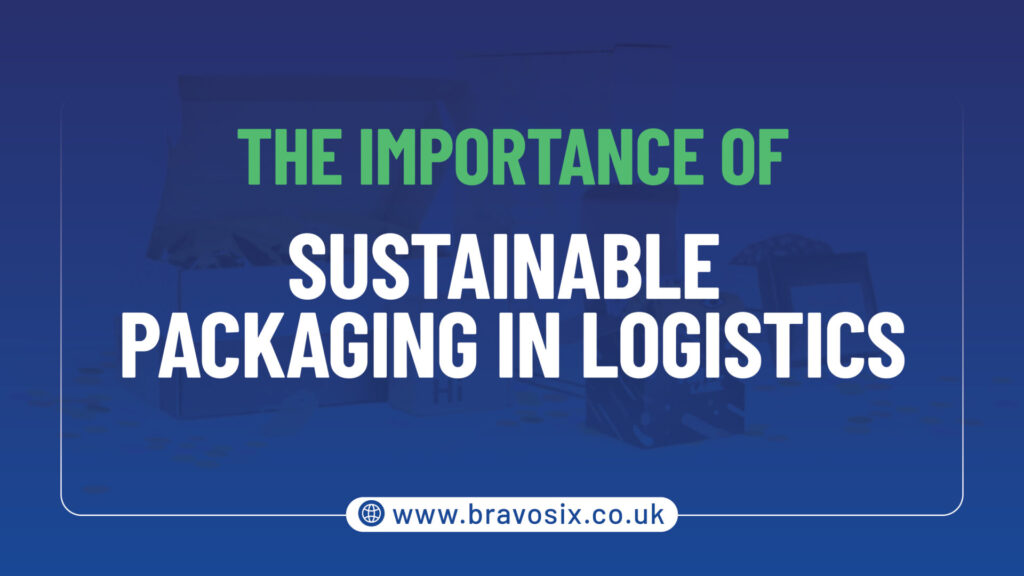In the contemporary world, where environmental issues are often discussed especially in the logistics sector, sustainable packaging has become more and more important. When choosing packaging materials, shipping, and delivery, Bravosix, which offers same-day delivery services in the UK, takes operational efficiency and environmental sustainability into account.
What is Sustainable Packaging?
Sustainable packaging is made with materials and practices that lessen their impact on the environment over the length of the packaging’s lifecycle. This includes selecting materials that are biodegradable, recyclable, or sourced from renewable resources. The goals are to safeguard natural resources, reduce waste, and reduce carbon emissions.
Why Sustainable Packaging Matters
Sustainable packaging reduces environmental impact by minimizing waste and conserving resources. It also aligns with consumer expectations, enhancing brand reputation and driving long-term success.
1. Environmental Impact
Traditional packaging materials, such as plastics, significantly increase pollution and waste in landfills. Until they decompose, plastics can harm species and ecosystems for hundreds of years. Sustainable packaging materials help solve these issues by reducing the amount of waste that ends up in landfills and the environment. Examples of these materials are recycled paper and biodegradable bioplastics.
2. Resource Conservation
When it comes to packaging, sustainable packaging usually uses less energy and resources than conventional packaging. For instance, the energy required to create materials like plant-based polymers and recycled paper is lower than that of their non-renewable counterparts. Resource conservation is crucial to addressing the global issue of resource depletion and ensuring that future generations will have access to important resources.
3. Reducing Carbon Footprint
Businesses that choose packaging materials with a lower carbon footprint or those powered by renewable energy sources can significantly reduce their overall emissions. This is a big step in the fight against climate change and helps businesses coordinate with global efforts to decrease greenhouse gas emissions.
4. Consumer Expectations
Modern customers are growing more and more concerned about environmental issues. Public support for businesses committed to sustainability is generally higher. By employing sustainable packaging techniques, companies can satisfy these consumer expectations, enhance their brand’s reputation, and increase customer loyalty.
How Sustainable Packaging Benefits Logistics
For logistics companies, the benefits of sustainable packaging extend beyond environmental impact:
1. Cost Efficiency
Although the initial cost of sustainable packaging materials may be greater, they frequently result in long-term cost benefits. For instance, since they lighten the shipments, lightweight materials can save money on shipping. Further cutting expenses can be achieved by optimizing storage and transportation space with packaging that is made to be smaller in size.
2. Enhanced Brand Image
Businesses that put sustainability first can stand out from the competition and improve their brand image. Logistics firms may draw in partners and consumers who care about the environment by demonstrating their dedication to eco-friendly operations.
3. Regulatory Compliance
Businesses that use sustainable packaging techniques are better positioned to abide by future requirements as environmental standards get stricter. By being proactive, you may reduce the risk of fines and make adjustments to meet evolving regulations more easily.
4. Improved Efficiency
Optimizing package design for increased durability and space efficiency is a common practice in sustainable packaging. As a result, there may be less chance of damage during transit and less waste due to more effective handling and storage.
Implementing Sustainable Packaging: Practical Steps
1. Evaluate Packaging Options
Start by assessing the current materials and exploring alternative options that offer environmental benefits. Consider materials like recycled cardboard, compostable films, or reusable packaging solutions.
2. Optimize Packaging Design
Work on designs that use less material while still protecting the product. Efficient design can lead to fewer materials used and less waste generated.
3. Collaborate with Suppliers
Partner with suppliers who share your commitment to sustainability. Choose those that offer eco-friendly materials and support sustainable practices.
4. Educate and Train
Make sure that the members of your team receive training on adopting new procedures and are informed about the advantages of sustainable packaging. This can support preserving consistency and facilitating a seamless switch to more environmentally friendly practices.
5. Monitor and Report
Keep a close eye on the success of your sustainable packaging initiatives and provide updates on your findings. This can show your dedication to sustainability and point up areas that need development.
Conclusion
The significance of sustainable packaging in logistics cannot be emphasized enough. Considering that businesses like Bravosix provide vital services like same-day delivery, using sustainable packing techniques is not merely a choice—it is a responsibility. By reducing its negative effects on the environment, conserving resources, and satisfying customer requests, sustainable packaging helps the business as well as the environment. A corporation that wants to be innovative must embrace sustainable packaging in an era where environmental concerns are becoming more and more relevant.






